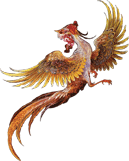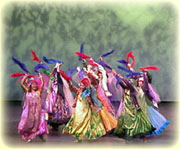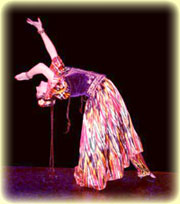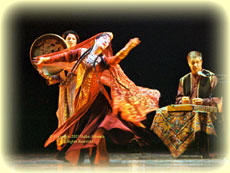

![]()
|
|
|
Home Contact us About us Iran highlights Guides |

Dance & Music Tour
Day 2: RASHT Depart by surface to Rasht, the capital city of Gilan province, is one the most important cities of this region. This city is situated in a vast plain at a distance of 30 km from the Caspian Sea in the slopes of the northern Alborz Mountain Range. The Caspian Sea province of Gilan is one of the most picturesque areas of Iran. Those unfamiliar with Iran, are often startled to find a lush, semi-tropical jungle area in which tea and rice are grown. The clothing, with its full skirts covered with ribbons, comes from the village of Qassemabad. One of the most popular dances of this colorful region is the dance in which the tasks of growing and harvesting rice are depicted with mimetic movements. It is called Qassemabadi . In the afternoon, you will enjoy the great dance performance of Gilaki group.Day 3: MASOULEH You will have a full day tour in this thousand-year-old village which resembles an anthropological and architectural museum. Masouleh is located 60 km southwest of Rasht and 25km west of Fooman in the western most part of Gilan Province. Even though Masouleh is close to the Caspian Sea, but it is 1,050 meters above sea level. The difference between the highest and lowest points in the village itself is 100 meters. The architectural style of the homes in Masouleh is stair shaped and is remarkable. They are continuous and uninterrupted and have been built in the heart of the mountain. A very interesting point about the homes in Masouleh is that courtyards and roofs are basically meaningless and do not serve their traditional roles and instead serve as pedestrian areas for passersby just like a street would.Day 4: ARDABIL Move toward Ardabil. This afternoon is at your leisure to do any shopping or exploring. Day 5: ARDABIL You will have a half day tour in this city in northwestern with 340,000 inhabitants (1996),situated on a plateau 1500m above sea level, 70 km from the Caspian Sea. Ardabil is famous for its good climate in summer, yet cold winters and springtime. The city offers its visitors warm mineral springs, which has made the city a popular resort for the rulers of Persia. You will enjoy Azeri dance performance in the afternoon. Day 6: ARDABIL-SANANDAJ Leave toward Sanandaj via Takht-e Solayman. Day 7: SANANDAJ You will have a half day tour in Sanandaj, a city in western Iran, and capital of Kordestan province. Its old bazaar is noted as a place to buy Kurdish handicrafts. The area around Sanandaj is known for its many mountain caves, hot springs, and freshwater lakes, many of which cater to tourists. Sanandaj is an ancient city, in existence when the Achaemenid Empire was established by Cyrus the Great in 550 BC. You will become excited by visiting the special dance performance of the Kurdish group. Day 8: SANANDAJ-KHORRAM ABAD Leave Sanandaj to Khorram Abad via Kermanshah. You will have the chance to become familiar with famous men studied the Iranian Dance and Music scientifically in Kermanshah. Day 9: KHORRAM ABAD Khorram Abad, city in western Iran, located in the Zagros Mountains, and capital of the province of Luristan. Khorram Abad is a market center for the farm products of the region and an industrial center manufacturing synthetic fibers and processed foods. Khorram Abad is one of the world's oldest inhabited cities for which there is archaeological evidence. You will enjoy a half day city tour in Khorram Abad in the morning and traditional Lor dance performance of this region in the afternoon. Day 10: SUSA Depart by surface to Susa. On the way you will visit Dezful, Shushtar and Choqa Zanbil. Stay overnight in Susa.
Day 12: AHVAZ-SHIRAZ Leave toward Shiraz. On the way, you will visit Koorangan, Sarab Bahram, Bishapour and Tang-e Chogan. Day 13: SHIRAZ Shiraz is the capital of Fars Province. Shiraz is traditionally known as the city of Roses and Nightingales, but has become known in recent times as a seat of intellectual learning. It was home to Sa'di and Hafez, the famed Persian poets, and is considered the cradle of Persian Civilization. Day 14: SHIRAZ-PERSEPOLIS One of the highlights of any tour of Iran is a visit to Shiraz and to neighboring Persepolis, the capital of Darius.Persepolis, which in Greek literally means the capital of Persia, lies 36 miles north of Shiraz. Persepolis is the ultimate expression of the ancient Middle East. Construction began by Darius the Great (521 - 468 BC) as the focus of the mighty Achaemenian Empire nearly 2,500 years ago. Spend a full day exploring these mighty ruins. Your tour will also include the Kuh-i-Rehmat, Nagsh-e-Rustam (Relief of Rustam) and Nagsh-e-Rajab. In the afternoon, you will enjoy the music and dance of Dervishes (Sufis) in Shiraz. Enjoy a half day tour with visits to the Eram Garden, the tombs of the Persian poets Sa'di and Hafiz, Nasirol-Molk Mosque, Afif-Abad Garden, the Church of Saint Simon the Zealot, Vakil Mosque, and the Shrine of Shah-Cheragh "King of Light", noted for its dazzling mirror tiles. You will become familiar with the traditional music of Shiraz. Day 15: EXCURSION TO BUSHEHR Move toward Bushehr, city in southwestern Iran with 180,000 inhabitants (2003 estimate), situated at the northern end of a narrow peninsula connected to the mainland by tidal marshes. It is the capital of the Bushehr Province, and its full name is Bandar-e Bushehr. Bushehr has two ports, an outer deep, which is exposed and an inner more shallow one. In the afternoon, you will enjoy the dance performance of BUSHEHR group (Dashti & Bandari)Day 16: BUSHEHR-SHIRAZ Move back toward Shiraz. On the way you will visit the nomads of Fars and become familiar with their traditional dance. The Qashqai, like most nomadic peoples in Iran, continues to wear their colorful costumes as everyday wear. The tribal confederation of the Qashqai were made famous by two films, "Grass" and "People of the Wind", which depicted their nomadic lifestyle and the movements of their huge herds of animals from summer quarters to winter quarters, throughout the province of Fars in southwestern Iran. Their rugs, carpets, and other weavings are world famous. The women are famous for the dance chupi, while the men engage in stick play (chub-bazi) which invariably attracts the interest of anthropologists and filmmakers alike. Fly to Isfahan at night. Day 17: ISFAHAN Isfahan is a wonder. Truly a city of splendor, legend has it that the city was founded at the time of Tahmourass or Keykavous. During the Safavid Era (sixteenth and seventeenth century AD), Isfahan was a city of Gardens and Palaces. As a major trade center of its time, Isfahan's was known as "Half the World." Your half day tour includes the famed Imam Square (Naqsh-e-Jahan), a huge square second in the world to Beijing's Tiananmen Square. Tour the architectural marvels of Sheikh Lotfollah and Imam Mosques, Aliqapu Palace, Chehel Sutoon Palace, and also visit one of the most famous bazaars in Iran, where you can purchase the arts & crafts for which Isfahan is so well renowned. In the afternoon you will have the chance to become familiar with the traditional music in this city. Day 18: ISFAHAN Today's half day tour includes Hasht Behesht, Vank Church, the spectacular and historic Friday Mosque as well as the famous bridges. In particular, the "33 arch bridge" or "Si o Se Pol" dates from 1602 and is a colorful meeting place for locals to gather, drink tea, and refresh themselves. You will enjoy the traditional Iranian dance. Day 19: ISFAHAN-MASHHAD Fly to Mashhad. You will enjoy Khorasan dance performance group in the afternoon. The Kurdish population of Bojnurd was forcibly moved to this area of Khorasan, in northeastern Iran by Shah Abbas in the seventeenth century. The women's clothing, which features a relatively short skirt, is unique in Iran. The men's home made footwear are elaborately embroidered, using silver and gold thread. There are several dances found in this region and the dance using sticks for maintaining the rhythm is very colorful. The music, like that of Western Afghanistan is largely cast in 7/8.
Day 21: TEHRAN You will have a half day tour in Tehran to visit the Archaeological Museum with its fine collection of artifacts, including a stone capital of a winged lion from Susa, and a sixth century BC audience hall relief of Darius the Great recovered from the Treasury at Persepolis. The museum contains items that date back from Sumerian Period (4500 BC) to the contemporary. Also, visit the Ethnological Museum, which houses unique wax works depicting a wide array of indigenous Iranian cultures. Later visit the Carpet Museum with its superb collection of Persian rugs and carpets, and tour the Glass and Ceramic Museum. You will have the chance to become familiar with the modern dance and music and discuss the comparison between traditional versus modern dance and music of Iran. Day 22: DEPART TEHRAN This morning you will transfer to the airport for your departing .international flight. |
| |
 Day 1: ARRIVE TEHRAN
Day 1: ARRIVE TEHRAN
 Day 20: ZAHEDAN
Day 20: ZAHEDAN 